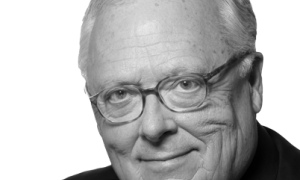Reading about Meryl Streep's preparation to act in "The Iron Lady" could lead one to believe that the real Margaret Thatcher was difficult to understand.
But if you go back to the dark days Britain faced in the late 1970s when she became prime minister, it's really not that hard.
To pay its bills, Britain had to borrow money from the International Monetary Fund. Protracted labor disputes led to long strikes and the "Winter of Discontent" in 1978.
That year, dead bodies went unburied. Uncollected trash piled up in the streets. More strikes loomed. It was no surprise when the Labor prime minister was ousted in a vote of no confidence and replaced by the Conservative Thatcher.
Like Ronald Reagan, though, Thatcher saw a nation in decline not as an inevitability to be managed, but as a problem to be solved. She believed the answer to Britain's problems was not more socialism -- which she didn't hesitate to lambast by name -- but free enterprise.
"I wanted to achieve my ambition of a capital-owning democracy," she said. "This is a state in which people own houses, shares and have a stake in society, and in which they have wealth to pass on to future generations."
Getting there required stubbornness on Lady Thatcher's part. Unlike previous governments, both Labor and Conservative, she didn't intend to just go along to get along. She believed government was doing too much. She launched a plan to get rid of what she called Britain's "nanny state."
That mainly meant breaking the power of trade unions and monopoly nationalized industries. Thatcher also intended to take control of the money supply, shrink the budget deficit, trim state spending, cut taxes and reduce government regulations. Quite an agenda.
But eventually, she prevailed. The government rode out a violent coal miners' strike in 1984. In the past, miners had brought down governments. Not Thatcher's. She refused to compromise and launched a new era in labor relations.
She had an understanding, rare among politicians, of where the money that funded "government spending" comes from -- not from some magic coffer, but from the pockets of hard-working citizens. Politicians, she reminded us all, must borrow or tax the money they use. (Or, all too often, misuse.)
Thatcher also saw eye to eye with Reagan on the common-sense doctrine of peace through strength, not accommodation and appeasement. "Wars are not caused by the build-up of weapons," she told the U.S. Congress. "They are caused when an aggressor believe he can achieve his objectives at an acceptable price."
In addition, she had a keen appreciation for America's unique role in the world. As she remarked in 2002, as she accepted the Clare Boothe Luce Award:
"It is always good to come to America. Whereas other countries remind you of problems, America teaches you possibilities.
"America today is the only global super-power. Like it or not -- and, on balance, I do like it -- that is a fact. Only America has the reach and means to deal with Osama bin Laden or Saddam Hussein or the other wicked psychopaths who will sooner or later step into their shoes. The rest of the world can and should do more. But so often wealthy countries with much to offer and more to lose just cheer -- or grumble -- on the side-lines.
"For those who love liberty, the fortunes of America are even more our preoccupation than in years gone by."
It was because she loved liberty, and worked tirelessly to defend it, that we at The Heritage Foundation are proud to have Lady Thatcher as our Patron, and to be the home of the Margaret Thatcher Center for Freedom. We know the real "Iron Lady." And no Hollywood production can substitute for the genuine article.
Ed Feulner is president of The Heritage Foundation.
First moved on the McClatchy Tribune Wire service

